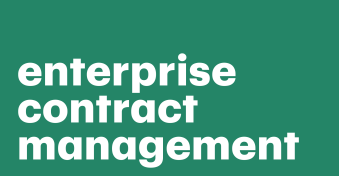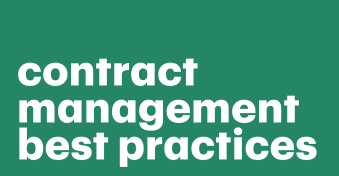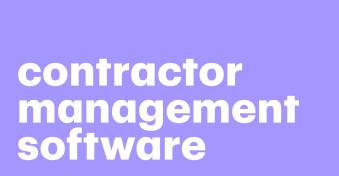The healthcare industry swims in a sea of inefficient paperwork — document management can be a massive headache for providers and business entities who would rather focus on what they do best: improving health outcomes.
This perennial migraine stems from manual, redundant file-handling processes, as well as the persistence of legacy systems.
That being said, modern tech solutions are in fact available, and more accessible than many might think.
One example: InSync Healthcare Solutions, a medical software provider, contacted us for assistance, citing the need to streamline their organization’s scatterbrained approach to document handling.
They wanted a solution to improve their handling of proposals, quotes, contracts, and medical records, and we delivered results.
In this article, we’ll explain how to implement healthcare contract management software and provide expert tips from real-world experiences.
Key takeaways
- Healthcare contract management software contains several features that allow you to generate, sign, and execute agreements.
- Healthcare companies can use contract management solutions to monitor performance, automate contract creation, generate CPQ, and manage sensitive documents.
- Administrators need to focus on contract risks, compliance, and renewals when using document management applications.
Types of contract management software in the healthcare industry
The types of documents needed by organizations in the healthcare industry span a broad spectrum.
We’ve split them into the following categories.
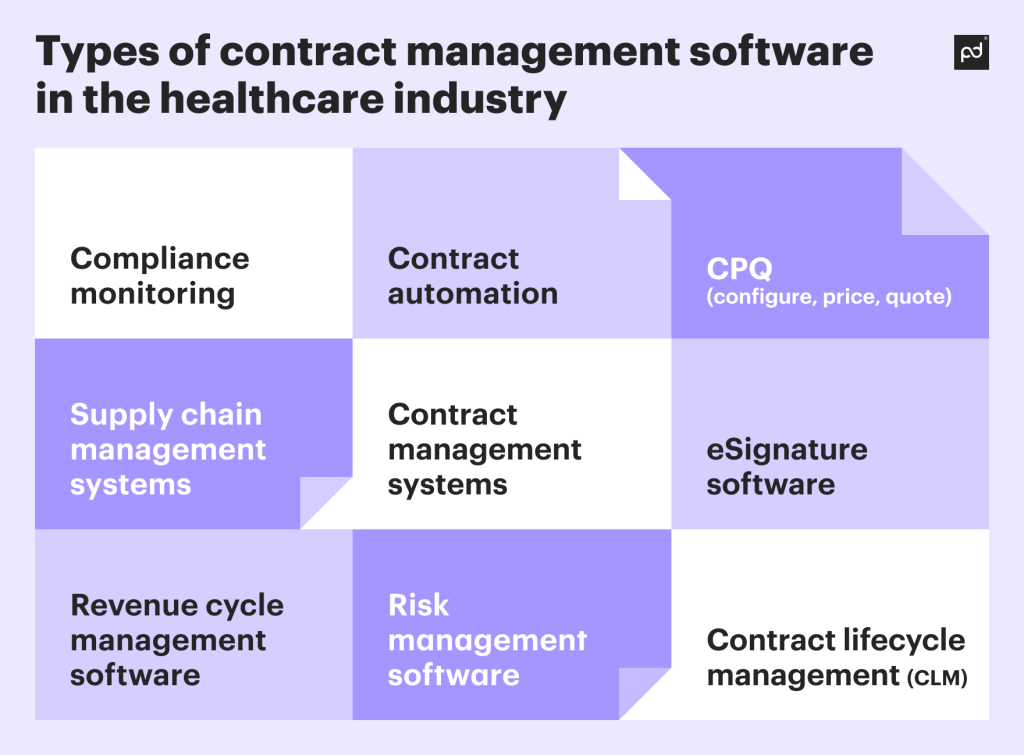
- Compliance monitoring: Used to track changes to compliance and medical regulatory standards, specifically HIPAA and others.
- Contract automation: Used to set reminders and eliminate risks such as data duplication, information loss, and delayed renewals.
- CPQ (configure, price, quote): Used to send proposals promptly to suppliers of medical devices and pharmaceutical products.
- Supply chain management systems: Used by healthcare institutions for collaborating with vendors and suppliers. These systems help in procurement, inventory management, and contract generation.
- Contract management systems: For managing agreements with insurance service providers. Medical institutions can also use these systems to automate reimbursement and enrollment policies.
- eSignature software: Designed for signing contracts with ease of use and HIPAA compliance in mind.
- Revenue cycle management software: For handling operational bills and cash flow within a medical institution.
- Risk management software: Needed by healthcare organizations for assessing and managing contract risks.
- Contract lifecycle management (CLM) software: For handling the agreement across every contract administration stage, from creation to storage until completion and deletion.
Challenges of implementing healthcare software for contracts
Healthcare organizations have a lot of systemic issues that prevent the successful implementation of contract management systems. Let’s discuss them:
Operational inefficiencies
In health systems with deeply entrenched bureaucracies, there is often a top-down mentality that prefers sticking with the old way of doing things.
This resistance to change makes it difficult to implement new technology across the organization.
Regulatory compliance
Being a highly regulated industry, every solution for managing business documents or patients’ medical records must be compliant with regulations such as HIPAA compliance, ACT, and others.
Your agreement management tool should also comply with regulations such as GDPR and PCI DSS if you are going to store users’ personal and financial data.
Legacy systems
Resistance to change also comes in the form of outdated legacy systems.
Some computers in hospitals and pharmacies still run on Windows 7 and earlier, making it difficult to install and run modern contract management software on them.
Security
Patient and physician contract management software must pass ISO 27001 certification as well as include airtight encryption protocols in order to store or process users’ medical records.
Essential features to manage healthcare contracts
The more specific, necessary features for healthcare contract software depend on the organization or entity using it. But first, let’s discuss the must-have features.
| Intuitive interface | The user interface should be easy to set up and use for medical staff and end users regardless of technical expertise. |
| Forecasting tools | AI-enabled forecasting functionality can also help hospitals to predict trends in health insurance to speed up the contract management process. |
| Central analytics dashboard | The contract management solution should have a central dashboard for tracking contract data. All decision-makers in the hospital or pharmacy should have access based on their clearance level and specific responsibilities. |
| Compliance monitoring | This feature helps to keep an eye on HIPAA compliance standards and provides updates about changes |
| Security features | This will keep medical records, purchase orders, and pharmaceutical invoices secure from unauthorized access. |
| Advanced search | Optical character recognition (OCR) and advanced filters will enable users to retrieve data from waivers, medical forms, and insurance claims faster. |
| Document repository | The software should contain a secure contract repository, as well as an editor with custom fields and HIPAA-compliant electronic signature solutions. |
| Customer support | Self-service portals, chatbots, and service desks will help hospital staff find solutions to urgent problems encountered while working on documents or during contract negotiations. |
For healthcare providers and suppliers, the document management solution should contain CPQ software for accurately configuring and pricing products when generating procurement quotes.
Similarly, pharmaceutical companies can also use prescription management features to save and verify prescriptions and monitor product inventory in the supply chain.
Vendors and suppliers can use healthcare vendor management solutions with billing and invoicing features to get paid for their services faster.
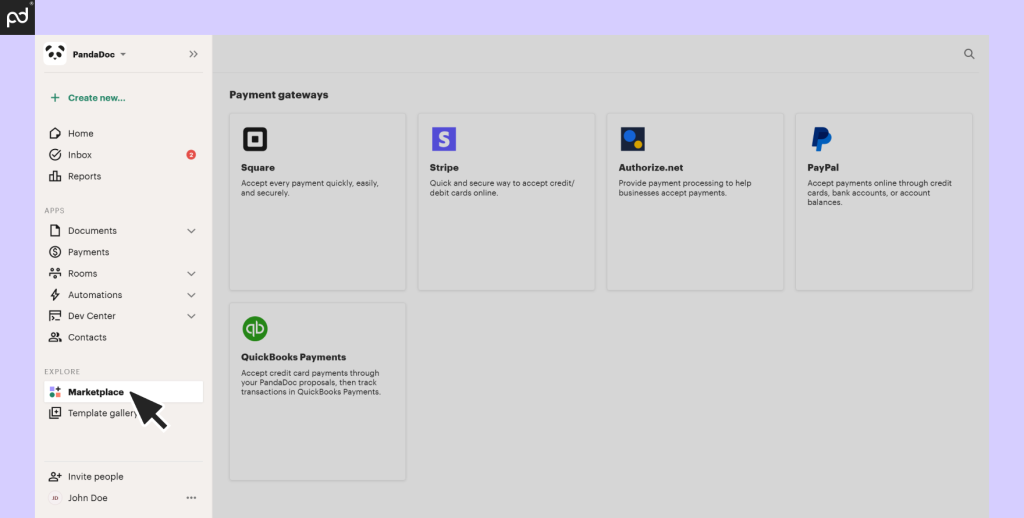
All stakeholders benefit from embedded payment integrations to pay for services seamlessly. Hospitals can also use this feature to compensate suppliers and outsourcing partners.
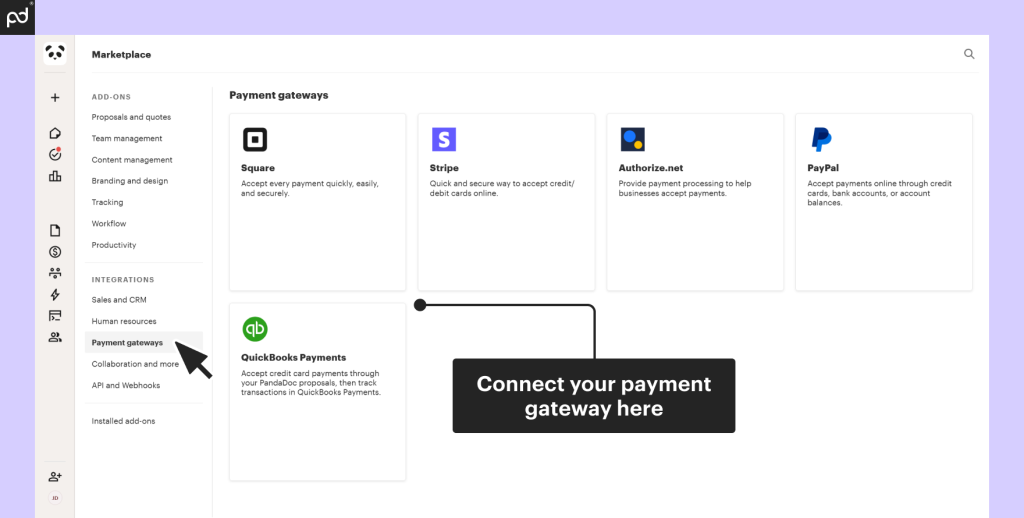
Approvals and digital stamps can help medical lawyers create, sign, annotate, and file suits using custom company logos and branding.
Benefits of finding the right healthcare contract software for your business niche
Contract management software should not be any generic, affordable solution from the app marketplace.
You need to choose a solution that addresses your unique needs. Here’s why:
Streamline contract creation
Hospital contract management software makes it easy for medical staff to create contracts by reducing the stress of manual processes and human error in workflows.
They also get access to a library of clauses and full templates for different agreements.
When using medical contract management software, these are the steps to follow in order to speed up contract creation:
- Find a template.
- Make final edits and embed all the necessary fields.
- Add payment options and other integrations.
- Send the document via URL to the intended signatories.
A case in point: A worldwide leader in diagnostics, Werfen, implemented our document management solution in order to streamline operational efficiency.
As a result, they were able to cut down the average document creation time from 1 hour to 5 minutes.
Track important data
Contract management software comes with analytical tools and integrations that can help you monitor contract performance metrics in order to improve patient care.
For instance, you can track the average response time for different types of contracts in order to understand which one works best for caregivers, suppliers, or payers. In-depth healthcare contract analytics will help you adjust the wording and field placement on the document.
Modern OCR-enabled solutions can also extract contract intelligence from documents in order to summarize and optimize future agreements.
Social workers can use it to analyze forms and reports to understand trending concerns for juveniles.
Increase revenue
Using an intuitive dashboard to improve document management efficiency also increases the close rate for deals, which you could have lost otherwise.
Consequently, healthcare institutions and medical service and software suppliers can use it to get proposals sent out and signed quicker, increasing revenue and ROI.
A case in point: Interlace Health has worked with EHR-integrated eForms, eSignatures, and workflow technology for over 30 years, supporting 1500+ clients.
Since adopting PandaDoc in March 2021, the hospital and healthcare software company dramatically cut proposal creation time by 85%, integrated with Salesforce, and enhanced their sales process. This efficiency gain led to improved document consistency, better CRM insights, and closing deals faster.
Keep users satisfied
Patients will be satisfied with the services you offer if they can sign contracts, waivers, and NDAs, as well as make payments from their devices.
Employee morale will also improve if they have a solution that can reduce their administrative workload and guarantee fewer grunts from ailing patients.
Protect sensitive data
The use of advanced encryption and security features such as tokenization and OAuth adds extra layers of security for data protection.
You can also use approvals and role-based access controls to track user activity and limit sensitive medical and financial records to individuals with the right security clearance.
Best practices for managing healthcare contracts
To ensure the healthcare contract solutions in your institution deliver optimum performance, here are some pro tips you need to know.
Keep an eye on compliance
To avoid fines and license suspension, always monitor the status of HIPAA contract compliance and other legal requirements.
You can set a notification to alert you about milestones, reimbursements, renewals, reviews, and updates.
Assign access by roles
Heads of organizations and departments need to give tiered permissions to medical staff and healthcare professionals based on their roles and responsibilities.
For instance, the chief of pharmacology should be the final signatory for massive purchases or inventory restocks.
Without his approval, the contract will not be executed.
Integrate contracts with your CRM
You should extend the capabilities of the contract management solution by integrating compliant payment solutions, cloud services, databases, analytical tools, and other applications.
One such application is the integration of your document repository with a CRM like Salesforce. This allows hospitals to receive quotes and invoices from suppliers using the Salesforce CPQ solution.
Conduct regular audits
Departments using contract management solutions should carry out regular audits to determine whether the software infrastructure has been compromised. Early detection will help them implement a crisis response plan and mitigate the exposure risks of vital medical data.
Had Australia’s Medibank carried out regular security audits, they might have been able to avoid the massive hack that endangered the medical records of almost 10 million patients.
Also, automate the audit trails so that the responsible stakeholders and administrators receive notifications when a feature does not work as expected, key dates loom, or security incidents occur.
Train your team
Your team should know how to perform basic operations on the healthcare contract management solution.
So, you need to carry out extensive training, seminars, and any onboarding necessary to show them how to fully use templates to reduce the time needed to generate contracts for product or services, prescriptions, and insurance documents.
You also need to educate team members about standard security best practices so they don’t create loopholes for unauthorized users.
If you are looking for the best healthcare contract management software for your purchase documents and medical records, PandaDoc is the perfect choice.
To find out how your healthcare institution or entity can use PandaDoc, book a demo with us right away.
Disclaimer
PandaDoc is not a law firm, or a substitute for an attorney or law firm. This page is not intended to and does not provide legal advice. Should you have legal questions on the validity of e-signatures or digital signatures and the enforceability thereof, please consult with an attorney or law firm. Use of PandaDoc services are governed by our Terms of Use and Privacy Policy.
